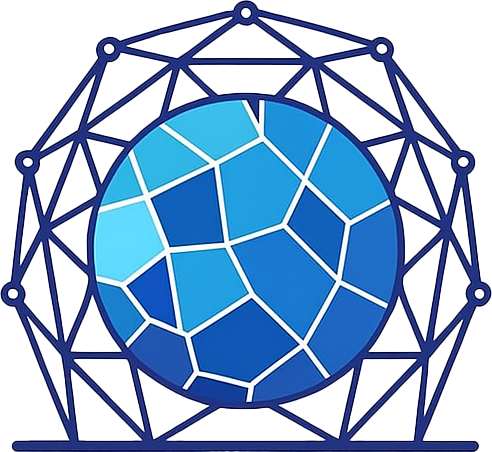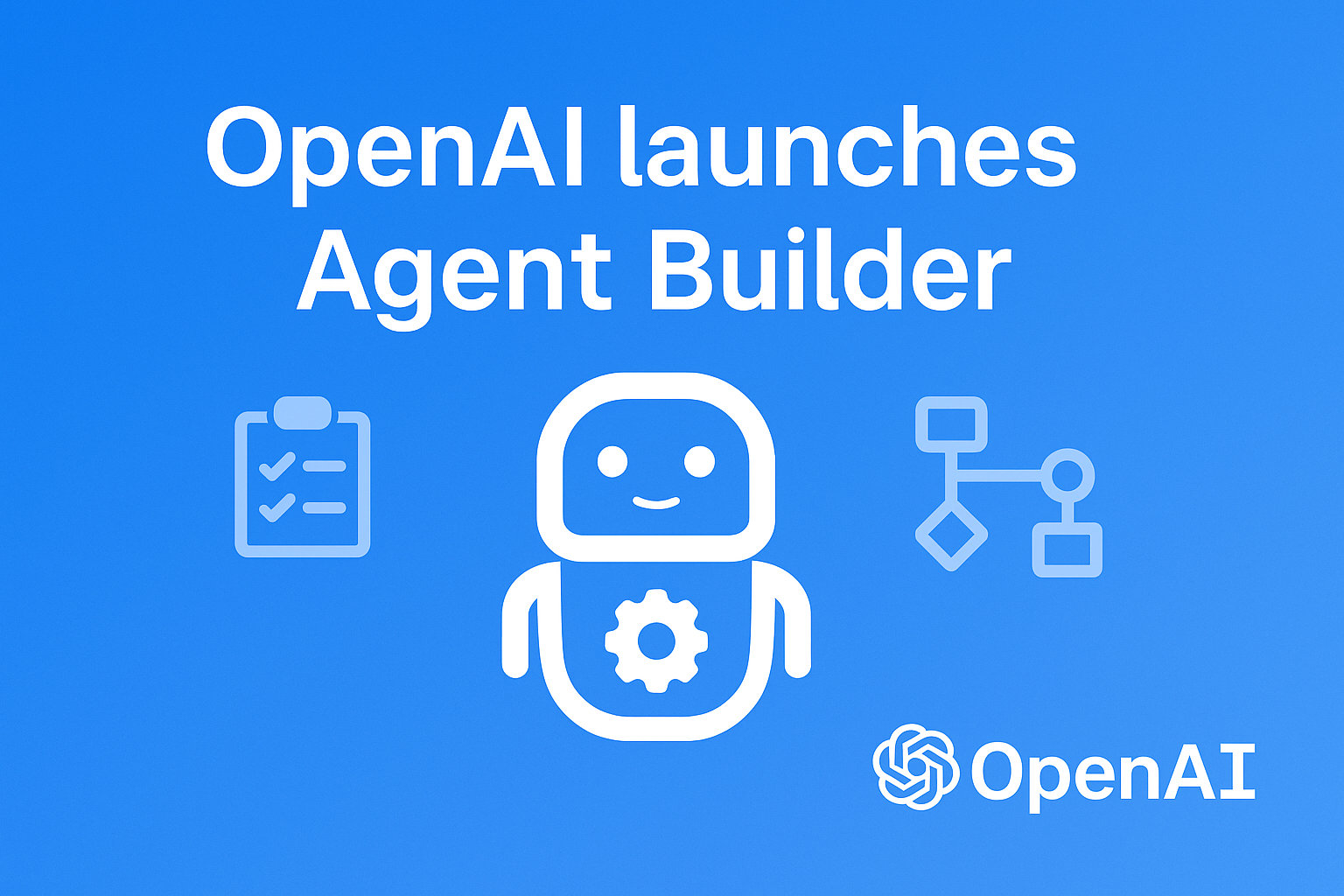openai no-code agent builder is here to change the game for creators, startups, and non-developers alike. Imagine building intelligent agents without writing a single line of code — that’s exactly what OpenAI’s new tools promise. In this article, we’ll dive deep into how this shift works, explore practical benefits (especially for local creators and teams), and walk through tips, real examples, and future directions.
OpenAI no-code agent builder is revolutionizing how people create and deploy intelligent agents. For years, building AI-powered systems required complex coding, API orchestration, and expensive infrastructure. Today, OpenAI’s new AgentKit changes that narrative completely — offering a drag-and-drop, no-code visual builder that empowers anyone to design, test, and deploy powerful AI agents with ease.
In this detailed guide, we’ll explore how the OpenAI no-code agent builder works, why it matters, its most exciting features, and how businesses, educators, and creators can use it — even at the local level — to automate workflows and deliver smart digital experiences.
What Is the OpenAI No-Code Agent Builder?
OpenAI’s AgentKit introduces a new era of AI development where you don’t need to be a programmer to build advanced AI systems. With the Agent Builder, users can visually design how an AI agent thinks, acts, and interacts — all within a simple graphical interface.
Instead of writing code, you:
- Design workflows using a visual drag-and-drop canvas.
- Connect tools, data sources, and APIs through pre-built connectors.
- Test, version, and deploy agents instantly.
It’s part of OpenAI’s broader move toward making AI development accessible, transparent, and scalable — not just for developers, but for small businesses, educators, and creators too.
The Agent Builder is accompanied by components like:
- Connector Registry: Pre-built integrations with popular tools such as Google Drive, Dropbox, Slack, and CRMs.
- ChatKit: Allows embedding your AI agent inside a website or app without needing frontend code.
- Evaluation & Optimization Tools: Automatically test, tune, and refine your agent’s performance.
This is OpenAI’s answer to platforms like LangChain or AutoGen — but with a focus on simplicity and accessibility.
Why OpenAI No-Code Agent Builder Is a Game Changer
1. Visual Workflow Design Without Coding
The most groundbreaking feature of the OpenAI no-code agent builder is its visual interface. Instead of writing orchestration scripts, users can visually connect nodes representing tasks, logic branches, and decisions.
For example, a simple customer support agent can be built visually:
- Take user input.
- Identify intent (refund, issue, etc.).
- Retrieve data from the CRM.
- Respond to the user.
Every node and connection is defined visually, meaning you can build complex logic flows just like drawing a mind map — no programming required.
2. Pre-Built Integrations and Connectors
Connecting an agent to real-world tools used to be one of the hardest parts of AI development. OpenAI fixes that with Connector Registry — a built-in marketplace of ready integrations.
You can connect your agent to:
- Google Sheets or Drive (for data retrieval)
- Slack or Discord (for communication)
- Payment systems or CRMs (for automation)
- Internal APIs (for company-specific tasks)
With these connectors, your agent can not only chat but also act — making it a true “action-based” AI assistant.
3. Built-In Chat Interface with ChatKit
With ChatKit, OpenAI allows you to embed an AI chat interface directly into your website or mobile app.
You simply copy an embed code, paste it into your site, and you have an interactive assistant powered by your custom-built agent.
This means:
- Businesses can add smart support bots without engineering teams.
- Educators can embed teaching assistants into e-learning platforms.
- Local service providers (like travel agents, doctors, lawyers) can use it to handle basic inquiries automatically.
It bridges the gap between backend logic and user-facing experience beautifully.
4. Safety, Guardrails, and Reliability
One of the key reasons OpenAI’s platform stands out is safety.
The OpenAI no-code agent builder includes robust safety guardrails:
- Filters for sensitive or personal information.
- Boundaries for what agents can or cannot do.
- Human approval layers for high-risk actions.
- Automatic testing to detect hallucinations or wrong logic.
These safeguards are essential for industries like healthcare, education, or finance, where reliability and compliance are non-negotiable.
5. Rapid Prototyping and Version Control
Traditionally, launching an AI agent took months of backend development and testing.
With OpenAI’s no-code platform, you can move from idea to prototype in a few hours.
You can:
- Test different logic branches.
- Save and version your agents.
- Roll back to older versions if needed.
Companies like Ramp and Zapier have already demonstrated the ability to build complex agents using OpenAI’s framework in record time.
How It Works: Step-by-Step Workflow
- Define your goal:
Decide what you want the agent to do (e.g., answer customer questions, process forms, analyze documents). - Design visually:
Use the drag-and-drop builder to create workflows (input → process → output). - Add tools or connectors:
Connect your CRM, database, or APIs directly via the connector registry. - Set rules and safety layers:
Define limits (for example, “Do not send payment without verification”). - Test and iterate:
Run simulations, view logs, and fine-tune responses. - Deploy with ChatKit:
Embed your agent into your product or website. - Monitor performance:
Track analytics, user interactions, and refine continuously.
No technical setup or hosting headache — OpenAI handles the backend infrastructure.
Practical Benefits for Businesses and Local Creators
For entrepreneurs, freelancers, and even local service providers, this innovation is huge.
Here’s why:
- Democratization of AI: You don’t need a coding background to build intelligent tools.
- Cost Efficiency: No need to hire developers for simple automation.
- Speed: Build prototypes in days, not months.
- Localization: You can easily adapt agents to regional languages and audiences (e.g., Hindi, Urdu, Kashmiri).
- Empowerment: Local startups in places like Kashmir or small-town India can now offer AI-driven services affordably.
Example:
A travel agency in Srinagar could use OpenAI’s builder to create an agent that handles bookings, answers common tourist questions, and connects to WhatsApp — all in local languages.
Comparing OpenAI’s No-Code Agent Builder to Others
| Platform | Code Required | Visual Builder | Integration Ease | Safety Tools |
|---|---|---|---|---|
| LangChain | Yes | Limited | Manual setup | Partial |
| AutoGen Studio | Minimal | Yes | Medium | Limited |
| AIAP | Minimal | Yes | Good | Moderate |
| OpenAI Agent Builder | No | Yes | Excellent | Advanced Guardrails |
This comparison highlights how OpenAI’s new system leads the field in accessibility and safety.
Real-World Use Cases
Here are examples of what you can build today using OpenAI’s no-code agent builder:
1. Customer Service Chatbot
Handle FAQs, refund requests, and product queries automatically — freeing human agents for complex cases.
2. Internal Workflow Assistant
Connect to Slack or Notion and automate daily reports or project tracking.
3. Lead Qualification Bot
Engage visitors, ask qualifying questions, and send hot leads to your CRM.
4. Educational Tutor
Create an AI tutor that explains math or science topics, gives examples, and tests student understanding.
5. Healthcare Query Assistant
Guide patients through appointment booking or basic health FAQs (with disclaimers).
6. Local Government Agent
Help citizens access forms, register complaints, or learn about benefits — all in their native language.
Tips for Success with OpenAI No-Code Agent Builder
- Start simple. Build small agents first to understand workflow behavior.
- Use descriptive names. Label your nodes clearly for easy debugging.
- Add validation steps. Prevent wrong outputs or unsafe decisions.
- Regularly test with users. Collect feedback from early testers.
- Use pre-built connectors smartly. Don’t overload the agent with unnecessary integrations.
- Set up logs. Always track interactions for quality assurance.
- Leverage safety features. Define boundaries to avoid overreach.
Challenges and Limitations
While promising, the OpenAI no-code agent builder still faces some challenges:
- Over-reliance on AI logic: Agents can occasionally misinterpret tasks.
- Limited explainability: Understanding why an agent chose a certain path isn’t always easy.
- Data privacy: Sensitive data must be handled carefully through permissions.
- Customization limits: For extremely specialized systems, coding may still be needed.
However, as the platform evolves, these limitations are expected to diminish rapidly.
Future of No-Code Agent Building
AI development is heading toward an agentic ecosystem — where multiple agents cooperate, learn, and adapt automatically. OpenAI’s builder lays the foundation for this.
Expected future trends include:
- Multi-agent orchestration (agents working in teams).
- Adaptive memory and long-term context.
- Improved debugging and observability tools.
- Marketplaces for pre-built agent templates.
- Region-specific customization (supporting local industries, languages, and data).
This shift makes AI not just reactive but proactive — capable of taking initiative based on context.
Important Resources
- Visit ContactDirectoryAI for practical AI adoption insights:
https://www.contactdirectoryai.com/ai-marketing-strategies - Learn how to integrate AI tools in small businesses:
https://www.contactdirectoryai.com/ai-tools-for-startups - For official information and documentation, visit OpenAI’s site:
https://openai.com/index/introducing-agentkit - Research background on no-code AI frameworks (academic source):
https://arxiv.org/abs/2408.15247
Frequently Asked Questions
1. Do I need coding skills to use OpenAI Agent Builder?
No. You can design, connect, and deploy AI agents visually without any coding experience.
2. Is OpenAI Agent Builder available for everyone?
It’s currently being rolled out to developers and enterprise users, with broader access expected soon.
3. Can I connect my agent to external databases or APIs?
Yes. The Connector Registry allows linking internal or external APIs, CRMs, and data services.
4. How safe are autonomous agents built with OpenAI’s system?
The builder includes built-in guardrails, approval layers, and monitoring systems to prevent unsafe actions.
5. Is it suitable for small teams and local startups?
Absolutely. Small businesses can use it to automate customer support, lead capture, or education — with minimal cost.


Leave a Reply